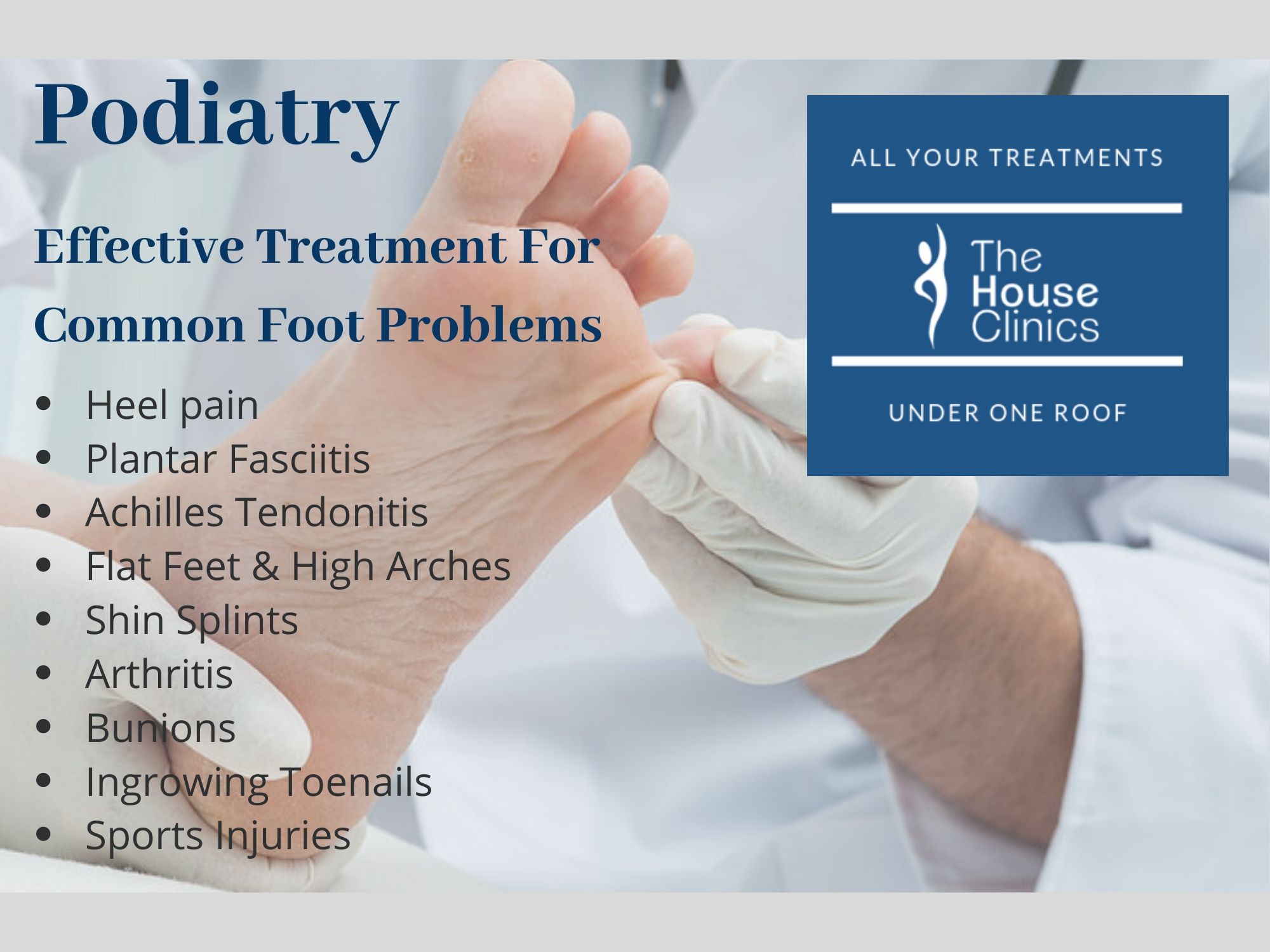

.png) Call Us Now - call 0117 942 0200 or BOOK ONLINE
Call Us Now - call 0117 942 0200 or BOOK ONLINE
Here at The House Clinics, Bristol, our caring and professional team of Podiatrists can diagnose and successfully treat a wide range of painful foot conditions so that you can get back to normal activity.
Podiatrists are medical specialists who have been trained to assess, diagnose, and treat conditions related to the feet, ankle, lower limbs, and their associated structures. Injury, overuse, or conditions causing inflammation involving any of the bones, ligaments, or tendons in the foot, can cause foot pain. Often, misalignment in the foot can cause pain and affect the way you walk or run. Your body counteracts this misalignment which can put a strain on certain parts of the foot, the ankles, calves, knees, hips, and even the lower back. A podiatrist can correct these problems arising from misalignment in several ways; predominantly by fitting custom-made insoles (Orthotics) to alleviate pain.
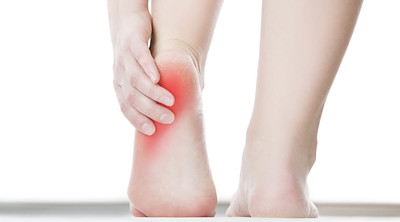
Heel Pain can be commonly caused by stress fractures, Severs disease (common in children aged 9-14), tendonitis, arthritis or nerve irritation. Another common cause is Plantar Fasciitis (which we explain below). It can also be to do with the shoes you are wearing. Pain Symptoms may be mild to severe and you will need a Podiatry assessment to find the cause of your pain. Your podiatrist will be able to determine the best course of treatment which may include advice on footwear, or orthotics, physical therapy, and an exercise/stretching programme.
A Podiatrist can be your best option if you've sustained a sports injury to the foot or ankle. Not only are they highly trained to treat them, but they can also give you expert advice on how to avoid them. Common sports injuries a Podiatrist can treat are as follows (you can read about some of these conditions further on):
Plantar Fasciitis is one of the most common causes of heel pain. It involves inflammation of a thick band of tissue that runs across the bottom of your foot and connects your heel bone to your toes. Podiatry treatment may include physical therapy, the use of orthotics, a night splint to stretch the calf and arch of the foot, taping and strapping to reduce strain and give support to the plantar fascia tissue in acute cases, and a programme of stretching exercises.

Achilles tendinitis is most commonly an overuse injury of the Achilles tendon, the band of tissue that connects the calf muscle at the back of the lower leg to your heel bone. It often affects frequent runners, people playing sports such as tennis which require quick stops and changes of direction, or people who wear high heels for prolonged periods Symptoms may include pain and swelling around the heel, tight calf muscles, limited range of motion when flexing the foot, red and warm to the touch. Podiatry Treatment may include wearing a shoe with a built-up heel insert to take tension off your Achilles tendon, stretching exercises, and physical therapy.
Shin splints are common in people with flat feet - when the impact of a step makes your foot's arch collapse (overpronation), and can also be caused by ill-fitting or unsupportive shoes, working out without warming up or cooling down, or because you have weak ankles, hips or core muscles. Symptoms may include a dull ache in the front part of the lower leg, pain that develops during exercise, pain on either side of the shin bone, pain along the inner part of the lower leg, and tenderness or soreness along the inner part of the lower leg. Podiatry Treatment may include the use of shoe inserts or orthotics, physical therapy, and a programme of stretching and strengthening exercises.
Flat feet (also known as collapsed arches) is a condition in which the arches of the foot collapse, with the entire sole coming into complete or near-complete contact with the ground. An estimated 20–30% of the general population has an arch that simply never develops in one or both feet. The reasons that may cause you to have Flat Foot vary from tendon injuries to arthritis and even diabetes. It is a common condition and is easily treated. Symptoms may include feet that tire easily, painful or achy feet (especially in the areas of the arches and heels), Back and leg pain, Swollen on the inside and bottom of your feet, Limited foot flexion - i.e standing on tip-toes). Podiatry treatment may include arch supports/orthotics, guidance on supportive shoes, stretching exercises, and physical therapy.
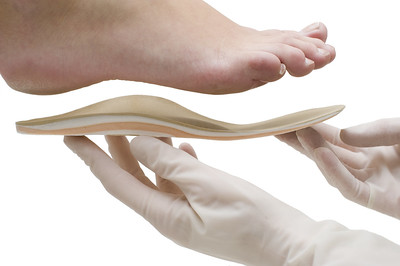
A high arch is when the arch along the inner side of the foot is higher than normal, leaving more of a gap between the foot and the floor. It is most commonly hereditary. Symptoms for people with high arches often include pain in their heel (Plantar Fasciitis), balls of their feet, anywhere in the foot, and frequently, problems like corns, calluses, bunions, or hammertoes. Podiatry Treatment may include custom orthotics, physical therapy, and a programme of exercises to stretch and ease pain in the foot.
Metatarsalgia is pain and inflammation felt in the ball of the foot. The condition can be caused by a variety of different factors that add pressure and stress to the ball of the foot. Common causes include wearing shoes that are too tight or narrow around the top of the foot or high heels that put more pressure on the front of the foot. High impact exercise can also be a cause. Symptoms can include shooting pain from the ball of the foot towards the toes, burning pain in the ball of the foot, and these symptoms are often aggravated by running, walking and standing for long periods. Podiatry treatment may include the use of orthotics or shoe inserts to support orthotics to redistribute the pressure and impact away from the ball of the foot, shoe advice, and a programme of stretching exercises.
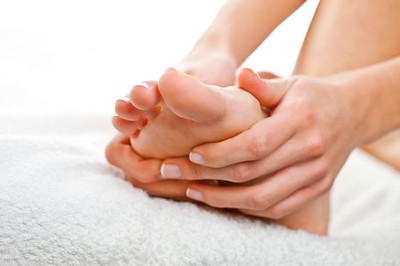
Arthritis of the foot (often seen in the big toe) causes the joints to become stiff and immobile. This in itself does not cause pain, but the subsequent changes in walking and gait patterns can cause referred pain in the knees, legs, and hips. And in some cases, where the arthritic change has progressed there will be a pain in the associated joint - caused by bone rubbing where the joint has become eroded. Treatment may include the use of orthotics/shoe inserts to reduce stress and loading on the arthritic joints as well as the knees, hips, and legs. Shoe advice will also be given - often a change in the style of shoes you wear is required.
A bunion is a combination of an enlarged joint at the base and side of the big toe as well as the big toe being angled towards the rest of the toes (this angulation is known as Hallux Valgus). A bunion can lead to other foot deformities and problems such as a hammer-toe, corns, and calluses as well as ingrown toenails. If the pain of a bunion is not a driving factor in itself to seek help from a Podiatrist, the secondary problems often are, as the discomfort becomes intolerable. Podiatry treatment may include the use of orthotics to relieve pain and discomfort, advice on footwear, removal of corns and calluses, the application of cushioned plasters and dressings. Bunions can only be removed and corrected through surgery, but your Podiatrist will be able to help with the relief of painful symptoms and give advice on whether surgery may be necessary.
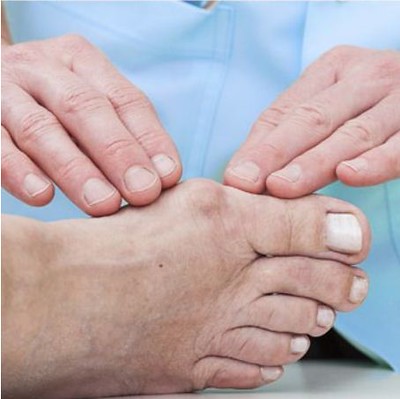
An ingrowing toenail is when the edges of the nail curl into the flesh of the toe. Ingrown nails can occur after an injury, due to excessive pressure on the toes (if you run or play high impact sport for example), due to tight-fitting shoes, incorrectly cut nails, or poor hygiene. It is painful and if left untreated can become severely inflamed and infected. Podiatry treatment in the first instance will include an assessment of the toenail to see if conservative treatment may help, which involves softening the skin and pushing it back away from the nail. However, in many cases, toenail surgery is necessary. Your podiatrist will either do a partial or full removal of the nail. The nail is dressed with an antibiotic solution if there is an infection and then dressed to protect it and avoid further infection.
Developmental concerns with children's' feet should be assessed and treated early to aid the correct growth of feet and joints and prevent gait issues in later life. The House Clinics podiatrist team is experienced in treating children of all ages with conditions such as:
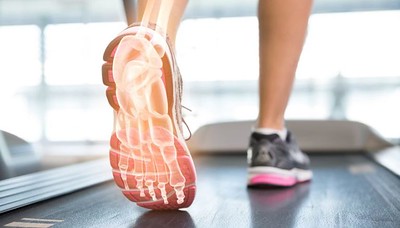
In an initial consultation, your Podiatrist will assess your ailment and make a diagnosis by examining the biomechanics of your feet and analyzing your gait (the way you walk/run) to identify the cause of your pain. The practitioner will then explain their findings with you and provide a variety of tailored treatments. These may include:
Insoles (Orthotics or shoe-inserts) may be prescribed to improve the alignment of the foot and how you walk.
Advice on footwear/sports shoes.
Taping or strapping of the feet.
A bespoke stretching or strengthening exercise programme.
For ingrowing toenails, you may need nail surgery.
Initial Consultation & Treatment (30 mins): £60
Follow-up treatment: £40
Bespoke orthotics: £300
Heat moulded orthotics: £200
Semi-bespoke orthotics: £85
Nail surgery: £375 (includes: Assessment, Treatment & 1 Follow-up Appointment)
Additional toes: £110
.png)